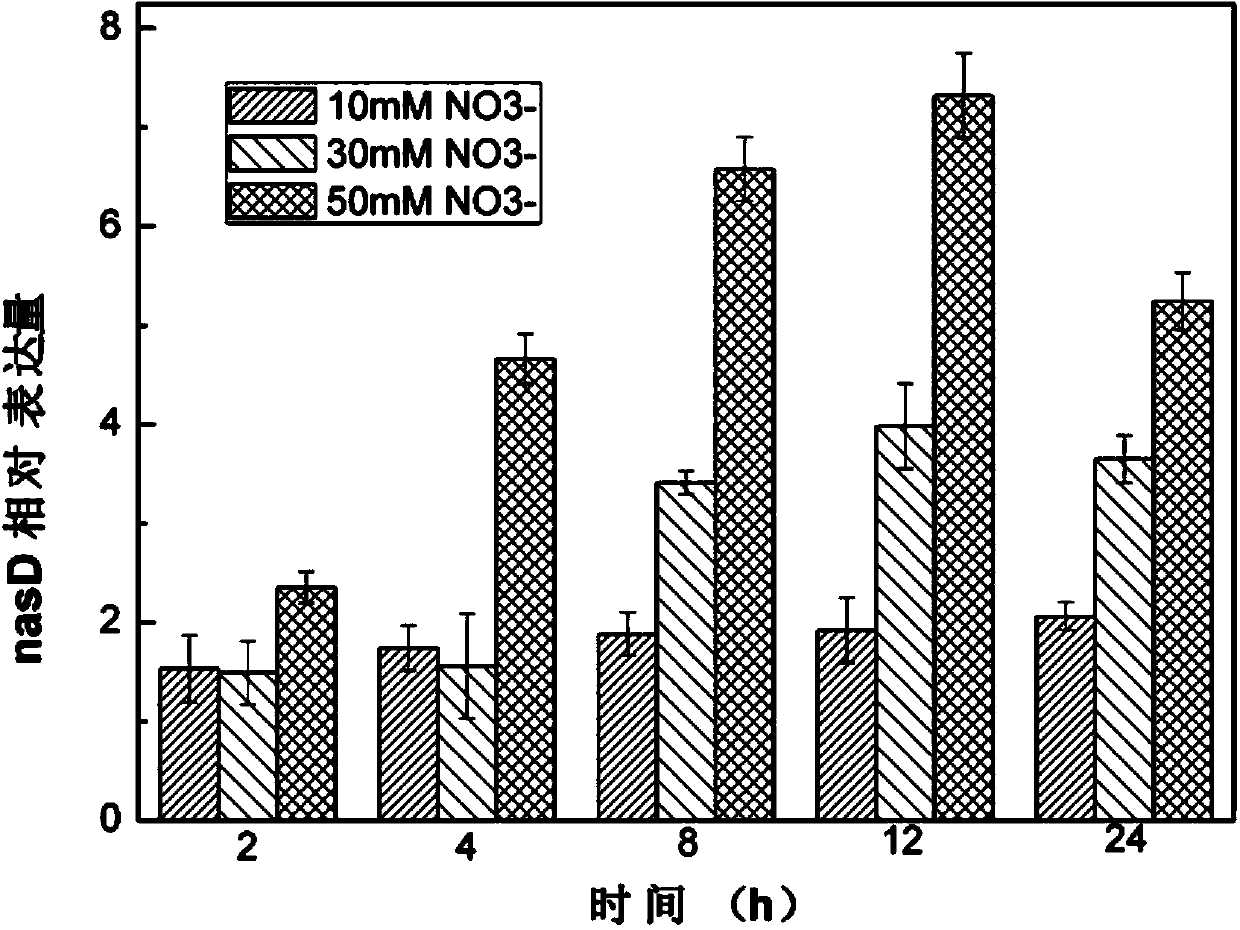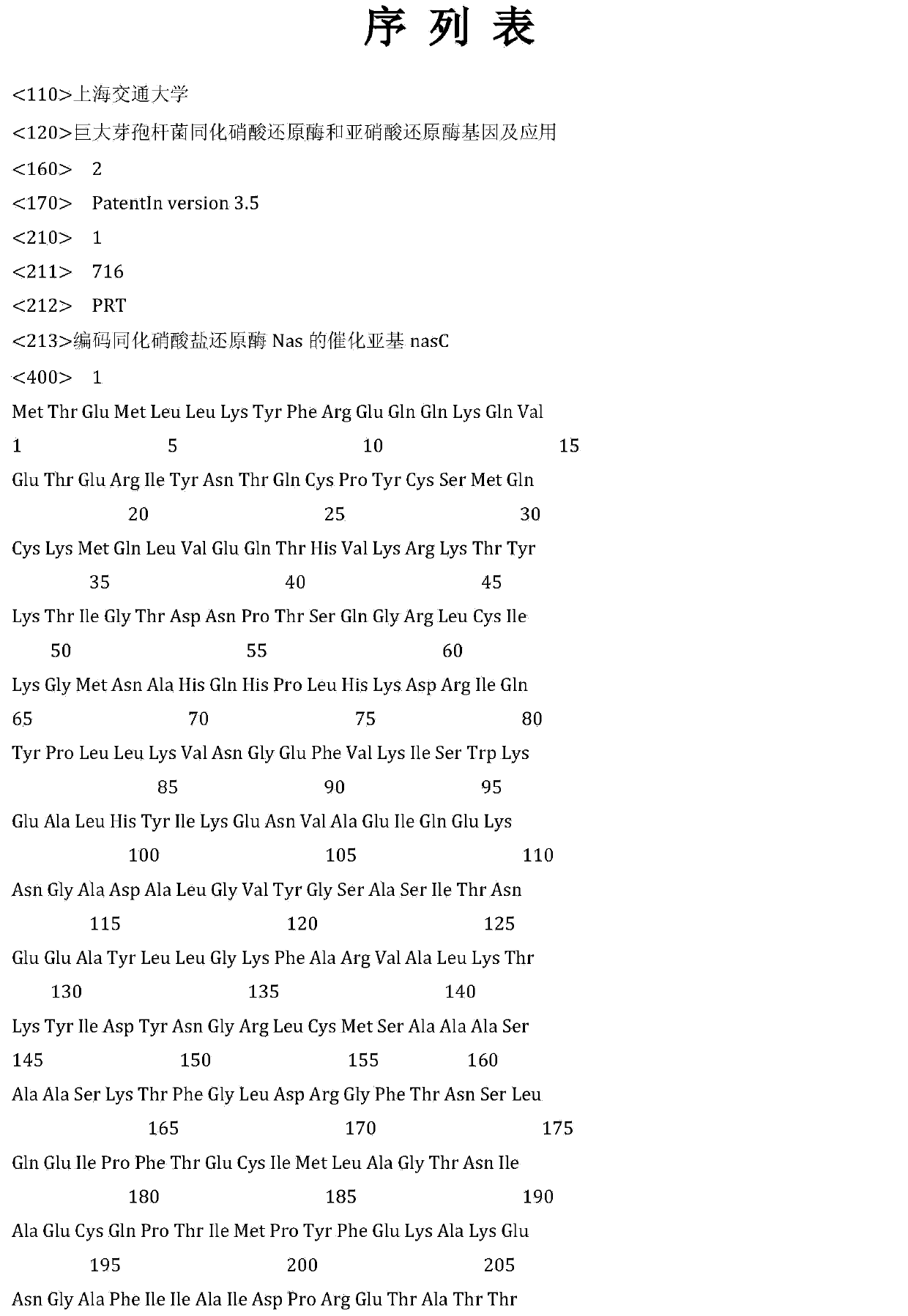Assimilation nitrate reductase gene and assimilation nitrite reductase gene both extracted from bacillus megaterium as well as applications of assimilation nitrate reductase gene and assimilation nitrite reductase gene
A technology of reducing enzymes and catalytic subunits, which can be used in applications, genetic engineering, plant genetic improvement, etc., and can solve problems such as nitrate removal
- Summary
- Abstract
- Description
- Claims
- Application Information
AI Technical Summary
Problems solved by technology
Method used
Image
Examples
Embodiment 1
[0035] Obtained sequences of assimilative nitrate reductase and nitrite reductase from strain NCT-2
[0036] 1.1 Source of the strain: Bacillus megaterium NCT-2 was isolated from a greenhouse in Chongming Island, Shanghai, which had been cultivated for 12-15 years. The preservation number is CGMCC NO.4698. It is No. 3, No. 1 Courtyard, Beichen West Road, Chaoyang District, Beijing, Chinese Institute of Microbiology; the preservation date is March 21, 2011.
[0037] 1.2 The strain was inoculated in the strain culture medium, placed at 30°C, 150 rpm, and shaken for 24 hours on a shaker.
[0038] Culture medium: KNO 3 10g, KH 2 PO 4 0.5g, KCl1g, MgSO 4 ·7H 2 O0.5g, CaCl 21mg, FeSO 4 ·7H 2 O10mg, glucose 15g, dilute to 1L with deionized water, adjust pH to 7.0 with NaOH, and autoclave.
[0039] 1.3 Genomic DNA extraction: Using the CTAB method, the genomic DNA is extracted and tested for quality. The requirements include the following three aspects: 1) Sample purity: A260...
Embodiment 2
[0046] Changes in gene expression of assimilative nitrate reductase and nitrite reductase in strain NCT-2 cultured at different nitrate concentrations
[0047] 2.1 Strain NCT-2 was cultured at different nitrate concentrations
[0048] 1) Different amounts of KNO were added to the inorganic salt medium 3 , so that the concentrations were: 10, 30 and 50 mM, and each concentration was set to 3 replicates.
[0049] 2) Negative control with (NH 4 ) 2 SO 4 As a nitrogen source, different amounts of (NH 4 ) 2 SO 4 The concentrations are respectively: 10, 30 and 50 mM, and each concentration has 3 replicates.
[0050] 3) Mother solution culture: with 10mM (NH 4 ) 2 SO 4 Nitrogen source inorganic salt culture strains. A 200mL culture medium in a Erlenmeyer flask was added to the incubator for 24 hours, and the culture conditions were 30°C and 180rpm. The negative control is the same.
[0051] 4) Add 95mL of culture medium and 5mL of bacteria solution to each Erlenmeyer fla...
PUM
 Login to View More
Login to View More Abstract
Description
Claims
Application Information
 Login to View More
Login to View More - R&D
- Intellectual Property
- Life Sciences
- Materials
- Tech Scout
- Unparalleled Data Quality
- Higher Quality Content
- 60% Fewer Hallucinations
Browse by: Latest US Patents, China's latest patents, Technical Efficacy Thesaurus, Application Domain, Technology Topic, Popular Technical Reports.
© 2025 PatSnap. All rights reserved.Legal|Privacy policy|Modern Slavery Act Transparency Statement|Sitemap|About US| Contact US: help@patsnap.com



